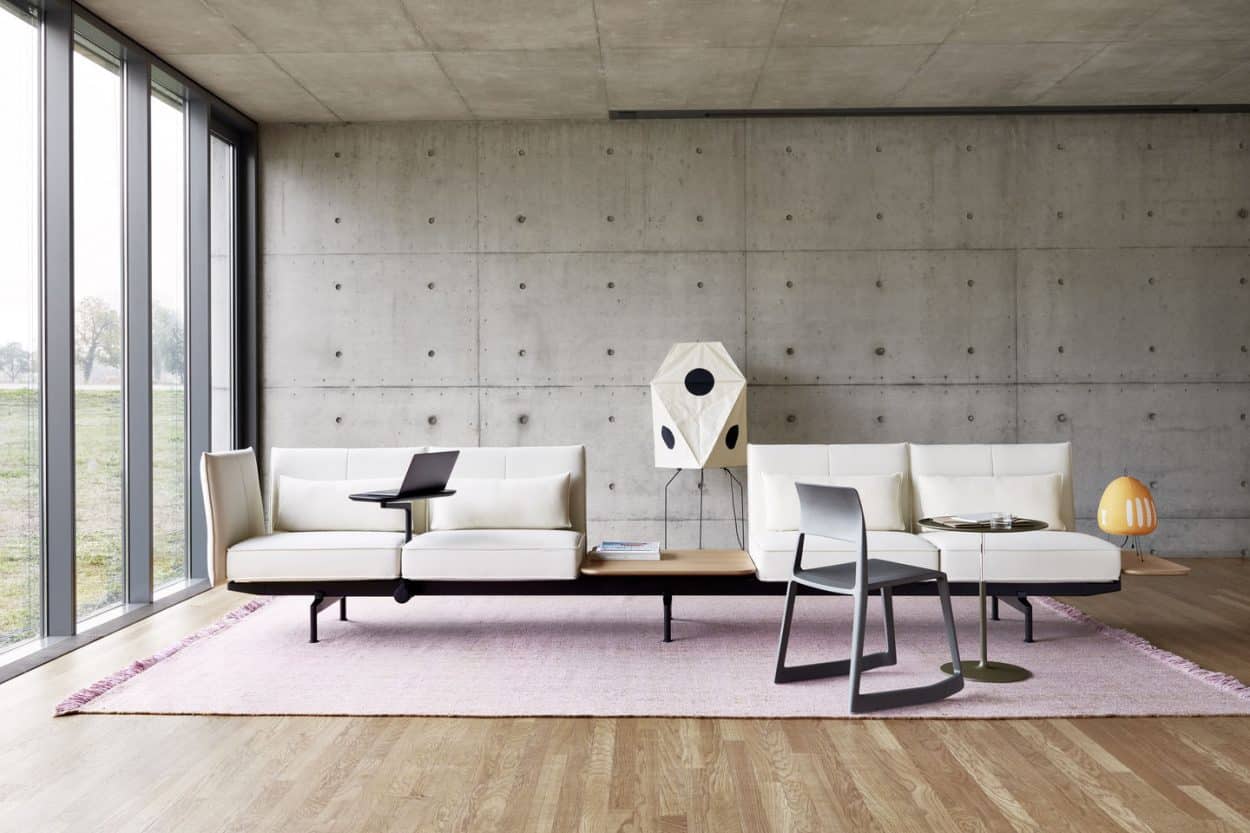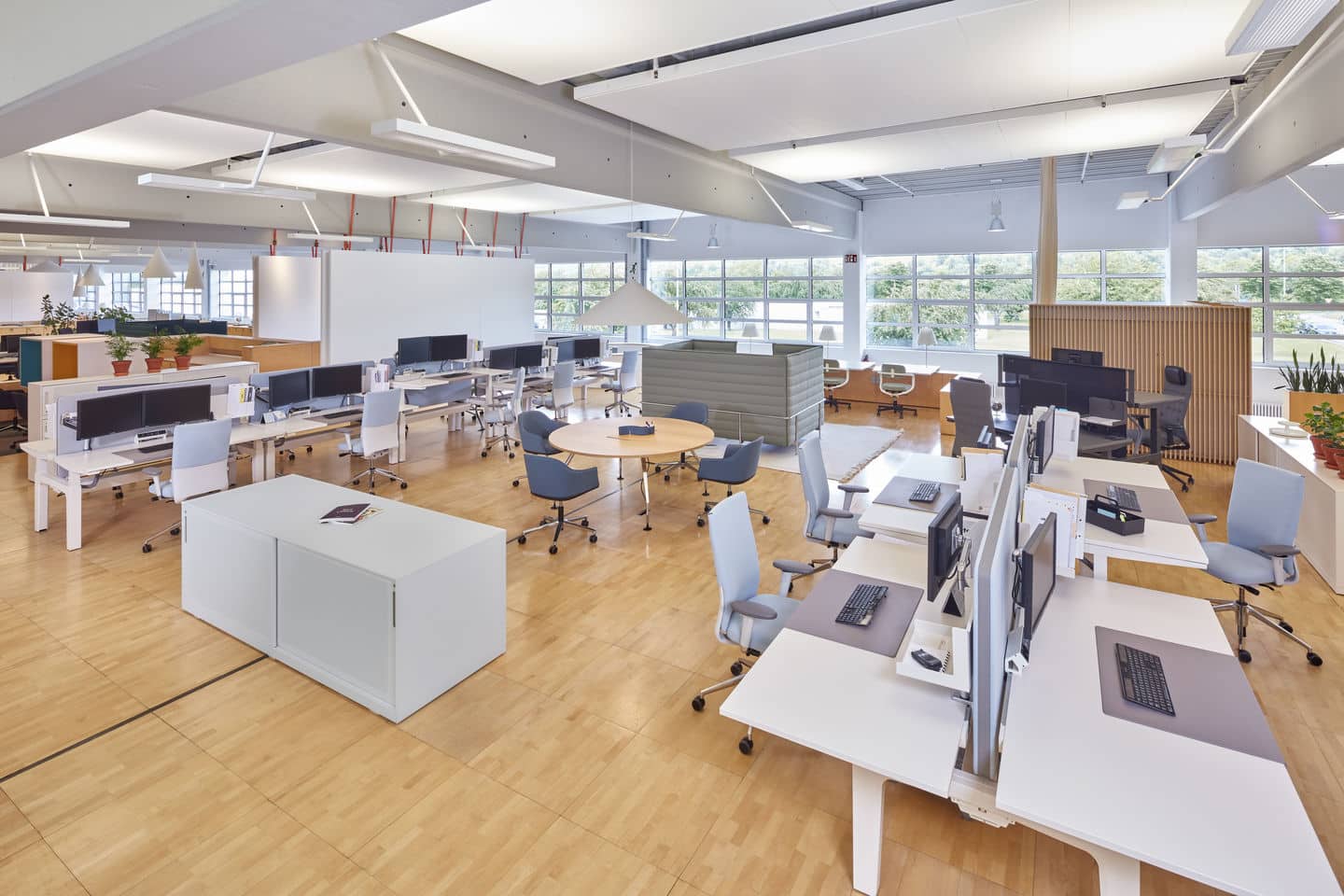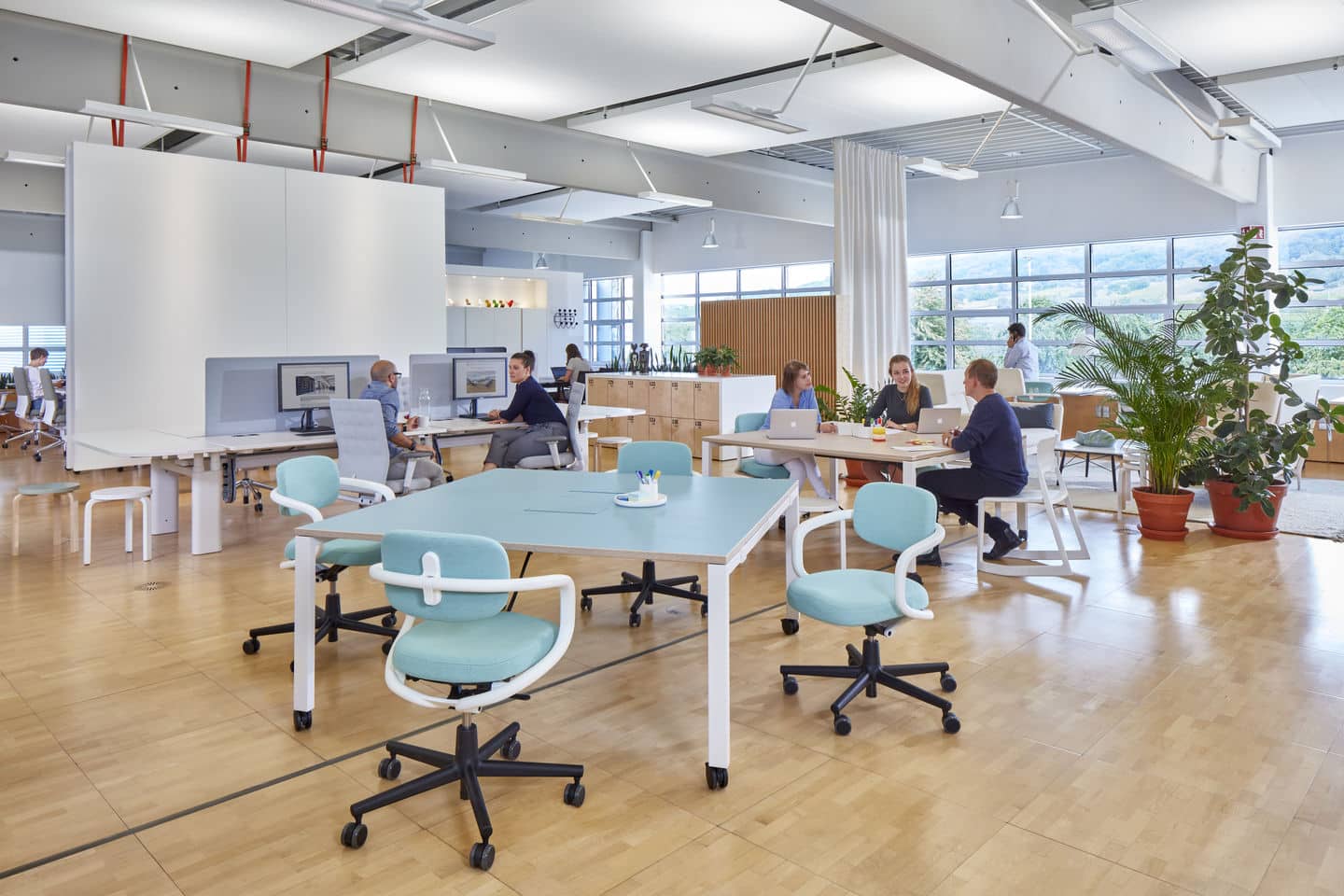As the world comes progressively out of lockdown with heightened attention to people and objects that surround us, Switzerland based design company Vitra is preparing for a new normal. Motivated by the hypothesis that temporary behaviors adopted to protect one another from COVID-19 will become necessary habits, Vitra is rethinking office design.
ArchiExpo e-Magazine spoke with Pirjo Kiefer, head of Vitra’s Interior Design Services, to learn about what Vitra predicts for office design in the days to come.
ArchiExpo e-Magazine: Do you think it is important to use surface materials that inhibit germ growth?
Pirjo Kiefer: We focus on materials that are easy to clean (e.g. plastics, MDF) or surfaces that are less prone to smear infection by the nature of their structure, such as textiles. According to experts, the irregular surface of textiles makes the likelihood of virus transmission less probable.
However, as described by Christian Drosten, director of the Institute of Virology at Charité University Hospital in Berlin, the so-called “smear infection” via surfaces seems to play a minor role in the spread of COVID-19. Bearing in mind that infection spreads predominantly from person to person, at Vitra we are developing specific space planning approaches to help our clients implement the rules of physical distancing in the workplace. We also recommend the regular cleaning of surfaces with a soapy solution, as these are the most efficient measures recognized today in preventing the spread of the virus.
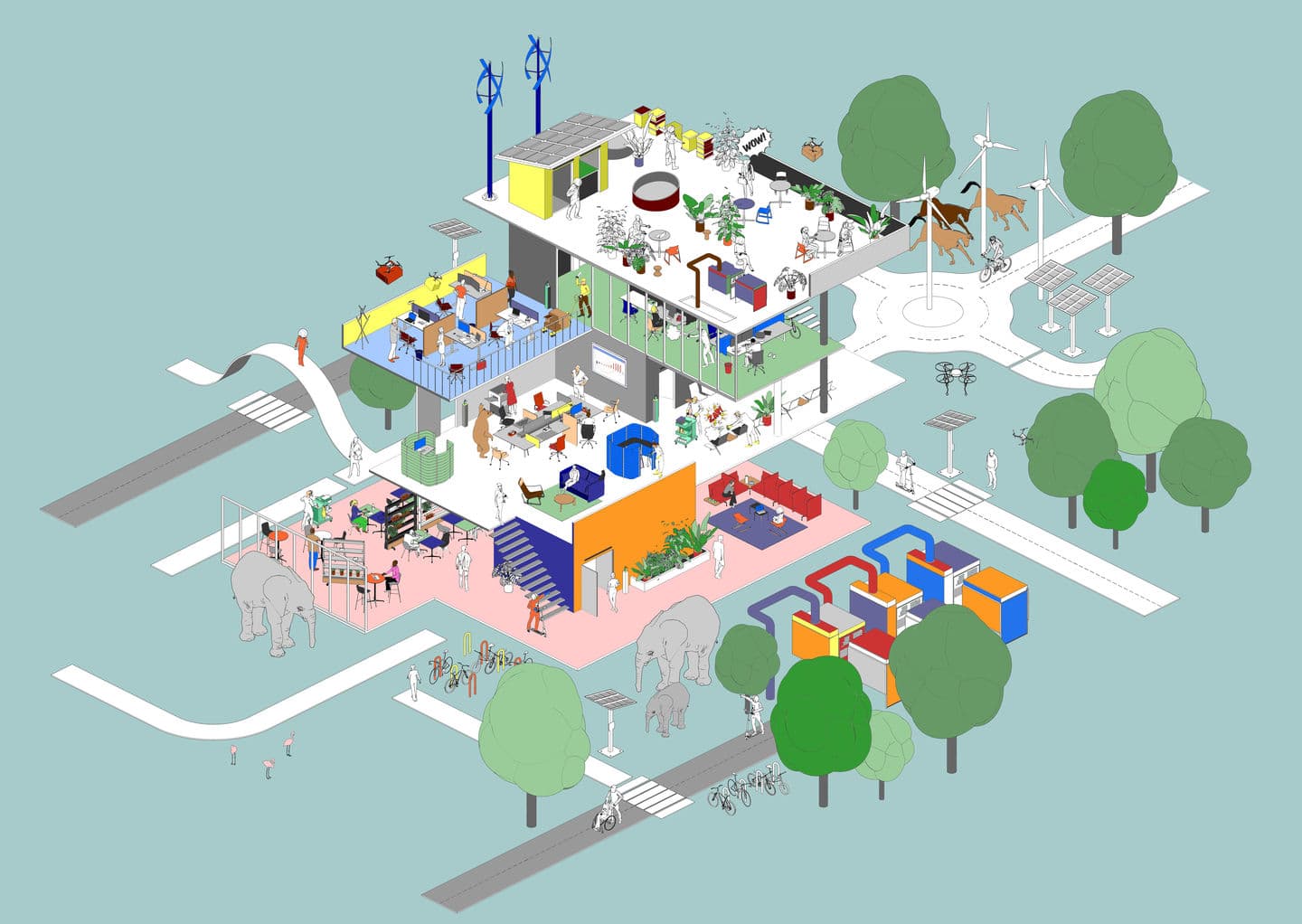
ArchiExpo e-Magazine: How do you think this lock-down period will change the way people work together?
Pirjo Kiefer: As has just been proven, digital technology gives us the freedom to work wherever we want, alone or with colleagues, thanks to remote connections. But after this intensive phase of working from home, we realize that what we miss the most is interaction. I don’t just want to meet colleagues and exchange ideas with them, I want to feel like I belong. I want to identify with the values of my employer and feel the pride and joy of being part of a whole. We perceive the office as a social platform.
ArchiExpo e-Magazine: Do you think the open-plan will go out of fashion?
Pirjo Kiefer: I do not see a revival of the cell, because why should I make a long commute to the office when I can work alone at home more comfortably, with greater concentration, and usually with a reduced environmental impact?
We are quickly applying new rules of conduct for dealing with COVID-19 to the office environment. Keeping a distance is a very important aspect, which works well with open plans which are spaciously designed for collaboration and well-being, while also providing sheltered areas for particularly vulnerable people, such as at the Citizen Office on the Vitra Campus.
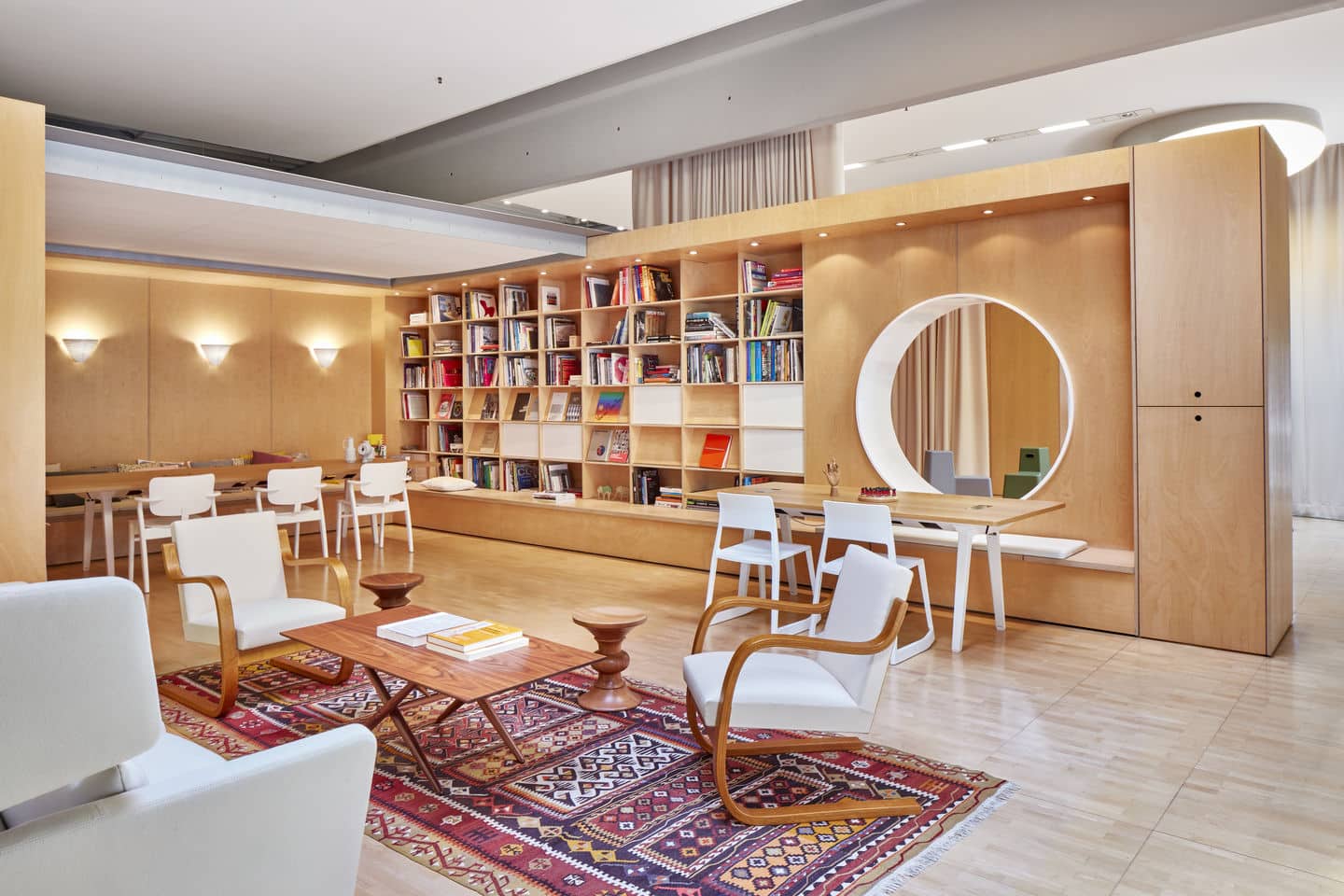
ArchiExpo e-Magazine: How can design be hygienic and still allow interactions between people?
Pirjo Kiefer: From my point of view, COVID-19 is accelerating trends in the current world of workplace design: it forces us to question our day-to-day habits and behaviors prior to COVID-19. In regard to space planning, flexibility is the top priority. Office spaces must be able to breathe in order to offer enough space for encounters, while also providing personal protection. Meeting rooms will have lower maximum capacities. Stand-up tables will be ideal for informal meetings, and workshop spaces will require flexible furniture and enough room for participants to keep a distance at all times. Outdoor meetings will become popular, and cleaning intervals will become shorter.
ArchiExpo e-Magazine: What kind of design possibilities do you see for plexiglass or other protective shields?
Pirjo Kiefer: Screens will help people to feel more comfortable in the office. There are a variety of screen types in the Vitra portfolio. Plexiglass or any other transparent material makes sense if you want to maintain eye contact with colleagues, but we also offer alternatives such as pressed polyester fleece. Additionally, screens can help improve acoustics in open spaces. One of our recently launched products, Soft Work, is a modular sofa system designed by Barber Osgerby, which can be used in lobbies and public spaces to create ad-hoc work areas.
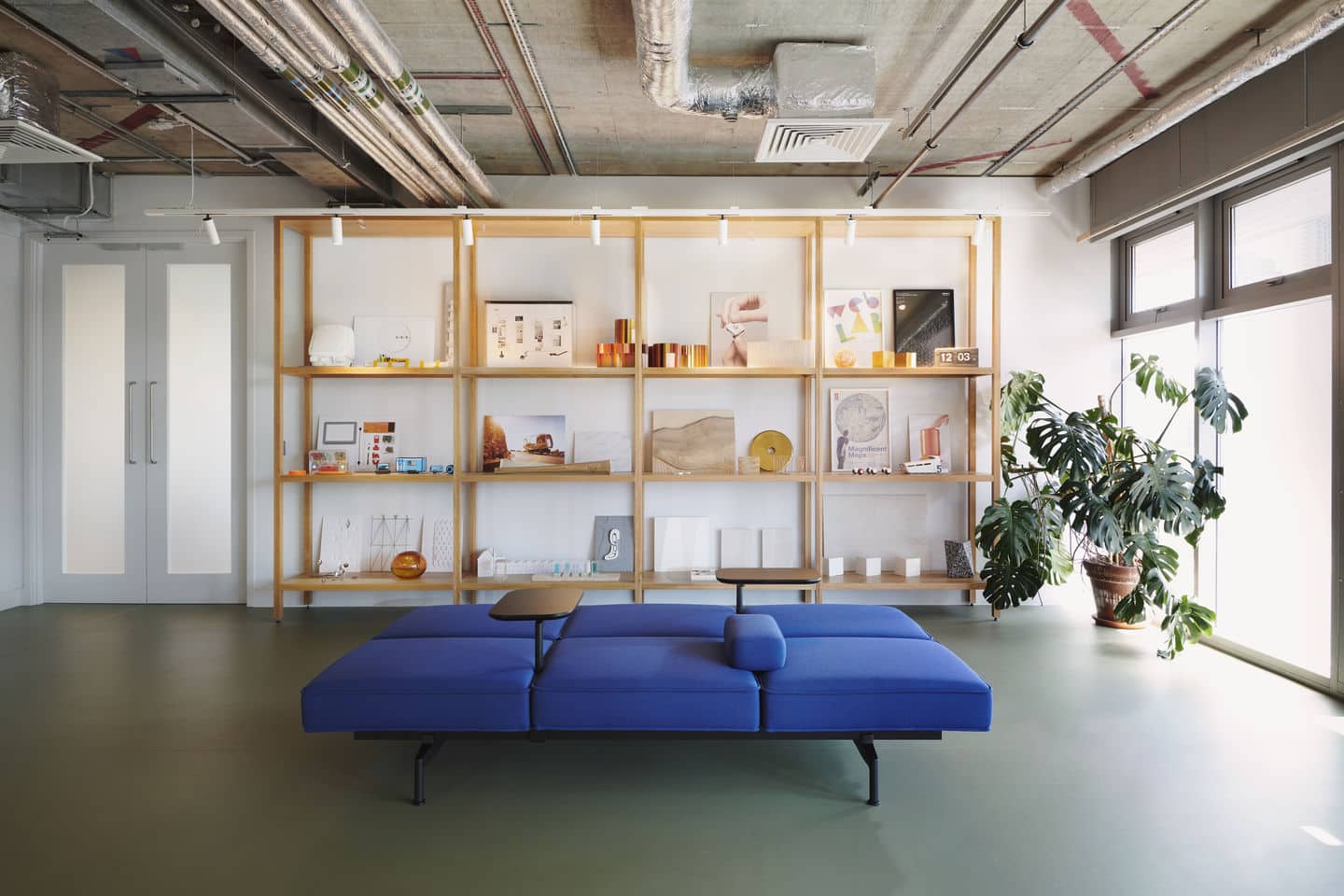
ArchiExpo e-Magazine: How do new hygiene standards create design opportunities for the Vitra office?
Pirjo Kiefer: On the one hand, we are learning just how flexible an interior must be in order to enable an adequate response to new circumstances, and on the other hand, there is an increased demand for protection and scalability. We already have products that are very well suited to these requirements: for example, the mobile partition element Dancing Wall, which allows users to spontaneously reorganize the layout of offices; or modular room-in-a-room systems like the Bouroullecs’ Workbays. Such products are becoming even more relevant, and these concepts are being developed further.
The experience with the coronavirus has made many companies more aware of the spatial component of their business and its importance. They had to ask: what impact does this have on the way we work, on our company culture, and finally for our office spaces? This thought process has been initiated, and we are ready to translate the individual findings of each company into new spaces.
Photos – Courtesy of Vitra
